| Revision as of 17:00, 9 February 2015 view sourceHafspajen (talk | contribs)Extended confirmed users, Pending changes reviewers, Rollbackers86,543 edits mmm← Previous edit | Revision as of 18:53, 9 February 2015 view source Hafspajen (talk | contribs)Extended confirmed users, Pending changes reviewers, Rollbackers86,543 editsNo edit summaryNext edit → | ||
| Line 29: | Line 29: | ||
| ===Featured pictures=== | ===Featured pictures=== | ||
| Twenty-five ]s were promoted this week. | Twenty-five ]s were promoted this week. | ||
| ] studied ]s for 13 years before being devoured by them. Luckily, this bear couldn't decide whether our photographer would be best boiled or fried, and missed his chance.]] | ] studied ]s for 13 years before being devoured by them <sup>(cos' he ignored elementary caution)</sup> . Luckily, this bear couldn't decide whether our photographer would be best boiled or fried, and missed his chance.]] | ||
| ].]] | ].]] | ||
| <!--These can vary a bit. Choose as appropriate, or create own per examples.--> | <!--These can vary a bit. Choose as appropriate, or create own per examples.--> | ||
Revision as of 18:53, 9 February 2015
 Article display preview: Article display preview: TKTK – TKTKFeatured contentTKTKTKTK TKTK – TKTKFeatured contentTKTKTKTK | This is a draft of a potential Signpost article, and should not be interpreted as a finished piece. Its content is subject to review by the editorial team and ultimately by JPxG, the editor in chief. Please do not link to this draft as it is unfinished and the URL will change upon publication. If you would like to contribute and are familiar with the requirements of a Signpost article, feel free to be bold in making improvements!
Last revised 18:53, 9 February 2015 (UTC) (9 years ago) by Hafspajen (refresh) | ||||

Featured content
A Grizzly Bear, Operation Mascot, Freedom Planet & Liberty Island, Cosmic Dust clouds, a cricket five-wicket list, more fine art, & a terrible, terrible opera...
Contribute — Share this By Adam Cuerden, WPPilot, Xanthomelanoussprog & Hafspajen February 2015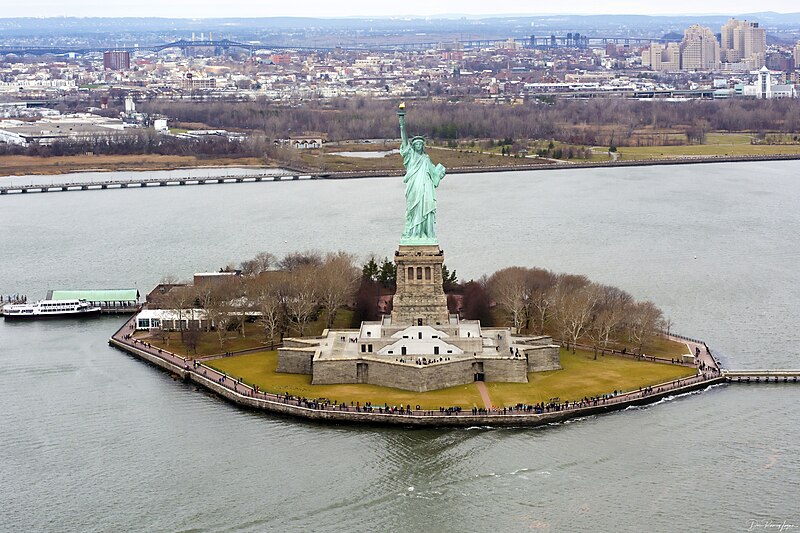
Featured articles
Two featured articles were promoted this week.

- Operation Mascot (nominated by Nick-D) Operation Mascot was an unsuccessful British air raid conducted by carrier-borne aircraft against the German battleship Tirpitz at her anchorage in Kaafjord, Norway, on 17 July 1944. The attack was just one of a series of strikes against the battleship launched from aircraft carriers between April and August 1944, initiated after Allied intelligence determined that the damage inflicted during the Operation Tungsten raid on 3 April had been repaired. A force of 44 British dive bombers and 40 fighters took off from three aircraft carriers on the 17th of July. German radar stations detected these aircraft while they were en route to Kaafjord, but the Tirpitz was protected by a smoke screen when the strike force arrived.
- Freedom Planet (nominated by Tezero) Freedom Planet is a two-dimensional platform video game created by independent developer GalaxyTrail, a studio set up for the project by designer Stephen DiDuro. The player controls one of three anthropomorphic animal protagonists: the dragon Lilac, the wildcat Carol, or the basset hound Milla. Aided by the duck-like Torque, the player attempts to defeat the evil Lord Brevon, who plans to conquer the galaxy. While the game focuses on fast-paced platforming, its levels are interspersed with slower action scenes.
Featured lists
Three featured lists were promoted this week.

- List of international cricket five-wicket hauls by James Anderson (nominated by Khadar Khani) In cricket, a five-wicket haul (also known as a "five–for" or "fifer") refers to a bowler taking five or more wickets in a single innings. A right-arm fast-medium bowler, James Michael "Jimmy" Anderson is an English international cricketer has played 99 Tests and 185 One Day International (ODI) matches for his country, and has taken 380 and 261 wickets respectively. Anderson plays first-class cricket for Lancashire and since arriving on the international scene in 2002/03, before his first full season of County cricket, Anderson has represented England in over 90 Test matches and over 160 One Day Internationals. He is England's all-time highest international wicket-taker when combined across all three formats, and only the fourth English bowler to take 300 Test wickets.
- Tom Cruise filmography (nominated by Cowlibob)Tom Cruise is an American actor and producer. In 1986, Cruise played a fighter pilot in the Tony Scott-directed action drama Top Gun and also starred opposite Paul Newman in the Martin Scorsese-directed drama The Color of Money. Two years later he played opposite Dustin Hoffman in the Academy Award for Best Picture-winning drama Rain Man (1988), and also appeared in the Golden Raspberry Award for Worst Picture-winning romantic drama Cocktail (1988). and the list goes on....
- List of accolades received by Star Trek Into Darkness (nominated by Miyagawa) Star Trek Into Darkness is a 2013 American science fiction film produced by Bad Robot Productions and Skydance Productions, and distributed by Paramount Pictures. Star Trek Into Darkness garnered 9 wins at ceremonies such as the ASCAP Film and Television Music Awards, Golden Trailer Awards and the California on Location Awards. It was written by Roberto Orci, Alex Kurtzman and Damon Lindelof, and was produced by J. J. Abrams and Bryan Burk in addition to the three writers.
- THE RELIGIOUS SET, MARY, ARCHANGELS AND THE EVILVade retro
-
 THE RELIGIOUS SET, MARY, ARCHANGELS AND THE EVIL
THE RELIGIOUS SET, MARY, ARCHANGELS AND THE EVIL
-
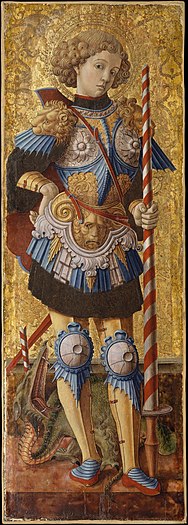 Saint George by Carlo Crivelli
Saint George by Carlo Crivelli
-
 Louis Guéymard in Meyerbeer's Robert le diable, as painted by Gustave Courbet
Louis Guéymard in Meyerbeer's Robert le diable, as painted by Gustave Courbet
Featured pictures
Twenty-five featured pictures were promoted this week.
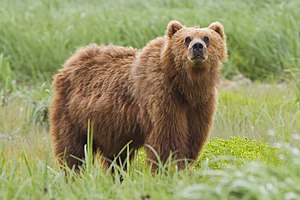

- Liberty Island (created and nominated by D. Ramey Logan (WPPilot)) Home of the Statue of Liberty, Liberty Island is a colossal neoclassical sculpture on Liberty Island in New York Harbor in New York City, in the United States. The statue designed by Frédéric Auguste Bartholdi, a French sculptor and dedicated on October 28, 1886, was a gift to the United States from the people of France, federally owned island in Upper New York Bay in the United States, best known as the location of the Statue of Liberty. The island is an exclave of the New York City borough of Manhattan, surrounded by the waters of Jersey City, New Jersey. A half-buried Statue of Liberty was Charlton Heston first "sign" to make him realize he was on Earth, (when the apes had already been speaking perfect English) in Planet of the Apes. Long known as Bedloe's Island, it was renamed by an act of United States Congress in 1956. Take Off from Manhattan Island in a Helicopter and ride along over New York Harbor with our resident Misplaced Pages Aerial Pilot & Photographer: WPPilot for a exclusive ride along on the photo shoot!
- Thomas Linley the elder (created by Thomas Gainsborough, nominated by SagaciousPhil) Thomas Linley was an English tenor and musician active in Bath, Somerset. Born in Badminton, Gloucestershire, Linley began his musical career after he moved to Bath at age 11 and became apprentice to the organist Thomas Chilcot. When Linley was 11 years old, in 1744, the family moved to Bath, Somerset where he served an apprenticeship with Thomas Chilcot, the organist at Bath Abbey. As his children grew and he developed their musical talent, he drew an increasing amount of income from their concerts while also managing the assembly rooms in Bath.
- The Threatened Swan (created by Jan Asselijn, nominated by Editør) The Threatened Swan is an oil painting of a swan made around 1650 by Dutch Golden Age painter Jan Asselijn. The oil painting on canvas is 144 centimetres (57 in) high and 171 centimetres (67 in) wide. The painting's subject is a mute swan (Cygnus olor) defending its nest against a dog. At the bottom right, the painting is signed with the monogram "A". By 1880, the painting was interpreted as a political allegory of grand pensionary (the highest official in the Dutch Republic) Johan de Witt protecting the country from its enemies.
- Rho Ophiuchi Great Rift, Rho Ophiuchi cloud complex, and Infra-red view of the Rho Ophiuchi cloud complex (created by ESO, Rogelio Bernal Andreo, and NASA respectively, nominated by The Herald) "The unlucky Ophiucus Set", a 3 photo set that first features "Rho Ophiuchi Great Rift" A rich collection of colorful astronomical objects is revealed in this picturesque image of the Rho Ophiuchi cloud complex from NASA’s Wide-field Infrared Explorer, or WISE. In astronomy, the Great Rift (sometimes called the Dark Side, Dark Rift, or, less commonly, Dark River) is a series of overlapping, non-luminous, molecular dust clouds that are located between the Solar System and the Sagittarius Arm of the Milky Way Galaxy at a distance of about 100 parsecs or about 300 light years (2×10 miles or 3×10 kilometers) from Earth. The clouds are estimated to contain about 1 million solar masses of plasma and dust. The Rho Ophiuchi cloud (pronounced ‘oh-fee-yoo-ki’ and named after a bright star in the region) is found rising above the plane of the Milky Way in the night sky, bordering the constellations Ophiuchus and Scorpius. It’s one of the nearest star-forming regions to Earth, allowing us to resolve much more detail than in more distant similar regions, like the Orion Nebula. Photograph by Rogelio Bernal Andreo of the binary star system Rho Ophiuchi. This star-forming region is located only 400 light years from Earth and is surrounded by a red emission nebula and numerous light and dark brown dust lanes. Nearby is the yellow star Antares while the globular cluster, M4, is visible between Antares and the red emission nebula. And what set of space photos would be complete without an Infrared light view of Rho Ophiuchi molecular cloud complex (by NASA). Beam me up Scotty.......
- Portraits
-
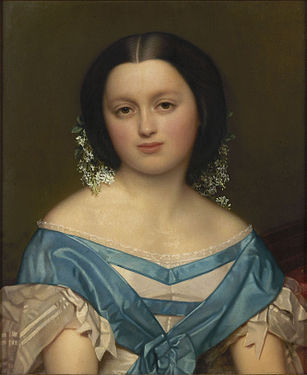 Henriette Mayer van den Bergh
Henriette Mayer van den Bergh
-
 William III of the Netherlands
William III of the Netherlands
-
 Thomas - Thomas Linley the elder
Thomas - Thomas Linley the elder




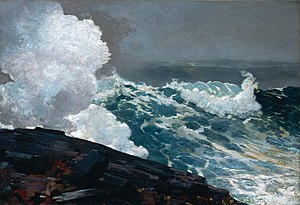

- William III of the Netherlands (created by Nicolaas Pieneman, nominated by Editør) William III was born on 1 January 1809 in Amersfoort in the Kingdom of Holland. He was King of the Netherlands and Grand Duke of Luxembourg from 1849 until his death in 1890. He was also the Duke of Limburg from 1849 until the abolition of the duchy in 1866. He married his first cousin, Sophie, daughter of King William I of Württemberg and Grand Duchess Catherine Pavlovna of Russia, in Stuttgart on 18 June 1839. His extramarital enthusiasms, however, led the New York Times to call him "the greatest debauchee of the age. On the 17th. of March 1849 his father died and William succeeded to the throne of the Netherlands. He was at that moment a guest of the Duchess of Cleveland in Raby Castle. Representatives of the Dutch government traveled to London to meet their new king in London. William was reluctant to return, but he was convinced to do so. Upon arrival the new Queen welcomed her spouse with the question "did you accept?". The new king nodded, but he remained uncertain about the matter for some time.
- Northeaster (created by Winslow Homer, nominated by Hafspajen) Northeaster is one of several paintings on marine subjects by the late-19th-century American painter Winslow Homer, he created it during his time in Maine. Winslow Homer (February 24, 1836 – September 29, 1910) was an American landscape painter and printmaker, best known for his marine subjects and seascapes. He is considered one of the foremost painters from the 19th-century in America and a proeminent figure in American art. After extensive travel, Homer settled in a studio built for him in 1884 at Prouts Neck, Maine. His studio is a museum now. Here he painted several wonderful marine subjects, depicting the fishermen's life, their work and their families. Later he chose more and more to paint the sea itself, especially the dramatic, stormy seas. Many of his paintings depict the battlefront of the sea and the shore and the waves crashing onto the rocky shore. It has been said that they "are among the strongest expressions in all art of the power and dangerous beauty of the sea."
- Louis Guéymard in Robert le diable (created by Gustave Courbet, nominated by Crisco 1492) This is a painting of Louis Guéymard in Giacomo Meyerbeer's opera Robert le diable, painted by Jean Désiré Gustave Courbet, a French painter who led the Realist movement in 19th-century French painting. It's rather a treat to get something interesting and unique, such a major painter illustrating an opera. It's a pity the opera's absolute shite. No, seriously. Let me summarize the plot. Robert, Duke of Normandy, is a terrible person, hence him being called "Robert the Devil". However he shows signs of his good nature, such as when he gives a woman over to be raped by his men... but then thinks better of it and stops them... when he realizes she's his half-sister. I'm not even exaggerating. His father, Bertram, is a more literal devil, and is trying to convince him to damn himself by signing his soul away, because Robert's such a good person that he'd lose him otherwise. He does this by sending him to an abbey full of the ghosts of naughty nuns to get a magic branch that he can use to gain the Princess Isabelle, his object of lust. Because apparently using the branch is equivalent to signing his soul away. Never mind, the whole point is to titillate the men in the audience who have a naughty nun fetish, so who cares about a coherent plot. When he goes to get Isabelle, she thinks Robert is using witchcraft to overpower everyone. Because he is. She convinces him to break the branch, and, having lost the ability to play witchcraft freeze tag, he has to flee without her. Last act! Bertram finally reveals he's Robert's father! And Robert's about to sign the contract! But his half-sister - you know, the one he was going to allow to be raped - arrives and tells him that Isabelle is waiting in a carriage just over there, ready to go off and marry him. Robert decides he should sign the contract anyway, just to be safe. Then he hears a religious hymn floating over the breeze... and in a life-changing moment... decides to not sign the contract, and just get everything he wanted without it. Big chorus about how he has succeeded in overcoming evil, despite having never done a single likeable act in the entire opera.
- Of course, plenty of good operas have stupidities in their plot - Der fliegende Holländer is basically a teenage girl's
Twilightundead pirate fanfic, about how noone understands her, and if only she could save someone bad with her love! It's saved by some extremely good music. The Magic Flute has a plot that's completely ridiculous. It's by Mozart, hence has excellent music (though why it's more popular than Don Giovanni, which is also by Mozart, but has a coherent, interesting plot, I'll never know). Maybe Robert le diable is saved by it's music? No: it's written by Meyerbeer, so it was doomed from the start.
- Portrait of Henriette Mayer van den Bergh (created by Jozef Van Lerius, nominated by Alborzagros) This painting of Henriette is by the Belgian painter Jozef Van Lerius, who specialised in mythological scenes, portraits and genre pictures. As his article says "much of his work is didactic in nature." To us, this portrait seems to be heading in the direction of Mark Ryden- it's a bit lowbrow.
- Kodiak bear (created by Yathin S Krishnappa, nominated by Hafspajen) The Kodiak bear The Kodiak bear, also called called Ursus arctos middendorffi - not to be confused with Venus willendorffi is one of the largest bears in the world. The Kodiak bear is a lovely looking giant bear, that has fluffy, soft and light brown fur and they are big and heavy, the small females are about 225 kg (500 lbs) and the big males around 635 kg (1400 lbs). That is quite a lot, ladies and gentlemen. That is about as heavy as a horse. They sleep in the winter and come out in the spring, eat berries and veggies plus salmon when it is salmon season. They don't eat people - the Kodiak bears generally keep away from people. If you meet a bear, just back away slowly and silently, without running, making sudden movements or noises. However don't go near any bear with cubs, they will attack. Also, don't try to take away their food and don't do stupid things like trowing stones on them, because they don't like it. Like one of the morons I had the unfortunate idea to go hiking with. A bear was passing by our tent in the evening, and the jerk throw a stone on the poor bear, who did nothing at all, just walked by. The bear didn't do anything during the night, (very diplomatic of him, I think) - but next evening when we come back from a long hike, we found the tent pulled out from the ground and totally ripped into pieces. The jerk was whining and fussing, but I have to say it gave me a certain satisfaction to notice this happening, why on earth he had to throw that stone on the poor animal for? So be nice to the bears and don't force them to get angry with you. They are very intelligent animals too, the level of intelligence seems to be somewhere between that of an average canine and a primate. Due to their level of intelligence, individual bears have personalities and unique ways of dealing with situations, one may have lunch with you while the other has you for lunch. If you are stupid.
- Saint George (created by Carlo Crivelli, nominated by Crisco 1492) Saint George was a soldier in the Roman army and was later venerated as a Christian martyr. His father was Gerontius, a Greek Christian from Cappadocia, and an official in the Roman army. Eastern Orthodox depictions of Saint George slaying a dragon often include the image of the young maiden who looks on from a distance. The standard iconographic interpretation of the image icon is that the dragon represents both Satan (Rev. 12:9) and the monster from his life story. His memorial is celebrated on 23 April (6 May), and he is regarded as one of the most prominent military saints. The episode of St. George and the Dragon was a legend Robertson developed by Crusaders returned from the Holy Lands. On the establishment of George as a popular saint and protective giant, Erasmus, in The Praise of Folly (1509, printed 1511) remarked "The Christians have now their gigantic St. George, as well as the pagans had their Hercules."
- Japanese invasion money for Oceania: One-half shilling, one shilling, ten shilling, one pound (created by Empire of Japan, nominated and prepared from the National Numismatic Collection of the Smithsonian Institution by Godot13) This is a set of four notes for the Japanese government-issued Oceanian Pound, a currency issued by the Japanese for use in the Gilbert and Solomon Islands, Papua New Guinea and New Britain. If you look carefully at the outline of the Chrysanthemum Seal on the ½ shilling note, you'll see a smiley face.
- Jabberwocky illustration (created by John Tenniel, nominated by FakeShemp) Illustration to the poem Jabberwocky, a nonsense poem written by Lewis Carroll in his 1871 novel Through the Looking-Glass, and What Alice Found There, a sequel to Alice's Adventures in Wonderland. Sir John Tenniel was an English illustrator, graphic humourist and political cartoonist whose work was prominent during the second half of the 19th century.
- The piece was titled "Stanza of Anglo-Saxon Poetry" and read:
Twas bryllyg, and ye slythy toves
Did gyre and gymble in ye wabe:
All mimsy were ye borogoves;
And ye mome raths outgrabe.
- Other strophes soon followed. John Tenniel reluctantly agreed to illustrate the book in 1871, and his illustrations are still the defining images of the poem. The illustration of the Jabberwocky may reflect the contemporary Victorian obsession with natural history and the fast-evolving sciences of palaeontology and geology. The poem was soon translated (!) to other laguages too, and lot's of interesting poetry come out of that. I German it goes like this:
Es brillig war. Die schlichten Toven
Wirrten und wimmelten in Waben:
Und aller-mümsige Burggoven
Die mohmen Räth' ausgraben.
- Elliðaey (created by Diego Delso, nominated by Crisco 1492) Elliðaey is the north-easterly most of the Vestmannaeyjar (Westman Islands), an archipelago consisting of 15 or 18 islands (and assorted smaller rocks) located south of Iceland. The island is uninhabited, but has a large hunting lodge, constructed in 1953. The lodge is owned by the Elliðaey Hunting Association. Despite rumors to the contrary circulating on the internet the island was not gifted to the pop singer Björk by the Icelandic government.
- Hereford Cathedral set: Nave looking east, nave looking west, choir of Hereford Cathedral, and Lady chapel (created by and nominated by David Iliff) Another lovely set by David, this shows the interior of Hereford Cathedral. There was a wooden church on this spot when Anglo-Saxon nobleman Milfrid rebuilt it in stone in 830 because he was so moved by tales of miracles wrought by Saint Ethelbert. In 1056 the cathedral was burnt by Gruffydd ap Llywelyn; it was rebuilt by the Normans and again (after the west end collapsed in 1786) by a mixed bag of architects.
- Whaler's Cove, Point Lobos, California (created and nominated by David Iliff) Point Lobos is the common name for the area including Point Lobos State Natural Reserve and two adjoining marine protected areas: Point Lobos State Marine Reserve (SMR) and Point Lobos State Marine Conservation Area (SMCA). Point Lobos is just south of Carmel-by-the-Sea, California, United States, at the north end of the Big Sur coast of the Pacific Ocean. The iconic Point Lobos area is geologically unique and contains a rich and diverse plant and animal life both on shore and in the water. Called the "greatest meeting of land and water in the world" by landscape artist Francis McComas, Point Lobos is considered a crown jewel in the California state park system. The original Point Lobos Ecological Reserve was created in 1973. As one of California's most well known and longstanding no-take reserve, Point Lobos became a hotspot for non-consumptive recreational diving known for its large and diverse fish populations.
- Virgin and Child with Four Angels (created by Gerard David, nominated by Crisco 1492) Virgin and Child with Four Angels (or Virgin and Child with Angels) is a small oil-on-panel painting by the Early Netherlandish artist Gerard David. Likely completed between 1510 and 1515, it shows the Virgin Mary holding the child Jesus, while she is anointed Queen of Heaven by two angels above her, accompanied by music provided by another two angels placed at either side of her. In its fine detail and lush use of colour the work is typical of both David and late period Flemish art. The painting is heavily influenced by Jan van Eyck's Virgin with Child at a Fountain, especially in the modeling of the Madonna and child.
- The Old Musician (created by Édouard Manet, nominated by Crisco 1492) The Old Musician is an 1862 oil painting on canvas by French painter Édouard Manet, produced during the period when the artist was influenced by Spanish art. The painting is composed of six characters and a baby in a landscape. Most of them are in fact real individuals. The painting also betrays the influence of Gustave Courbet. This work is one of Manet's largest paintings and is now conserved at the National Gallery of Art in Washington, DC.. The painting contains a series of more or less explicit allusions: the man in the top hat is the same character as The Absinthe Drinker, painted by Manet some years earlier and who reappears in this painting without any particular reason. The young boy in straw hat, meanwhile, is explicitly inspired by Antoine Watteau's Pierrot.


Discuss this story
These comments are automatically transcluded from this article's talk page. To follow comments, add the page to your watchlist. If your comment has not appeared here, you can try purging the cache.- I bet if, in the paragraph of Thomas Linley, you mentioned that his son (also named Thomas Linley) was very good friends with Mozart, you might have received a few more hits. :) kosboot (talk) 20:16, 12 February 2015 (UTC)
- There's an excellent discussion of the problems of Jabberwocky translations in Douglas Hofstadter's Gödel, Escher, Bach (ch.12 and its preface). What words/syllables do you need in French to cause the same reactions in a francophone reader, that the original does in an English reader? Scarabocchio (talk) 21:33, 18 February 2015 (UTC)
- Il brilgue: les tôves lubricilleux
- Se gyrent en vrillant dans le guave.
- Enmîmés sont les gougebosqueux
- Et le mômerade horsgrave.
The Signpost is looking for new talent. Home About Archives Newsroom Subscribe Suggestions Categories: